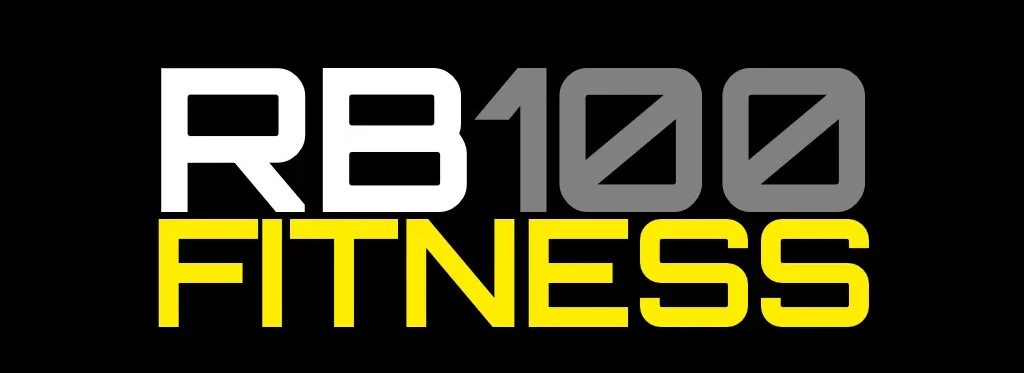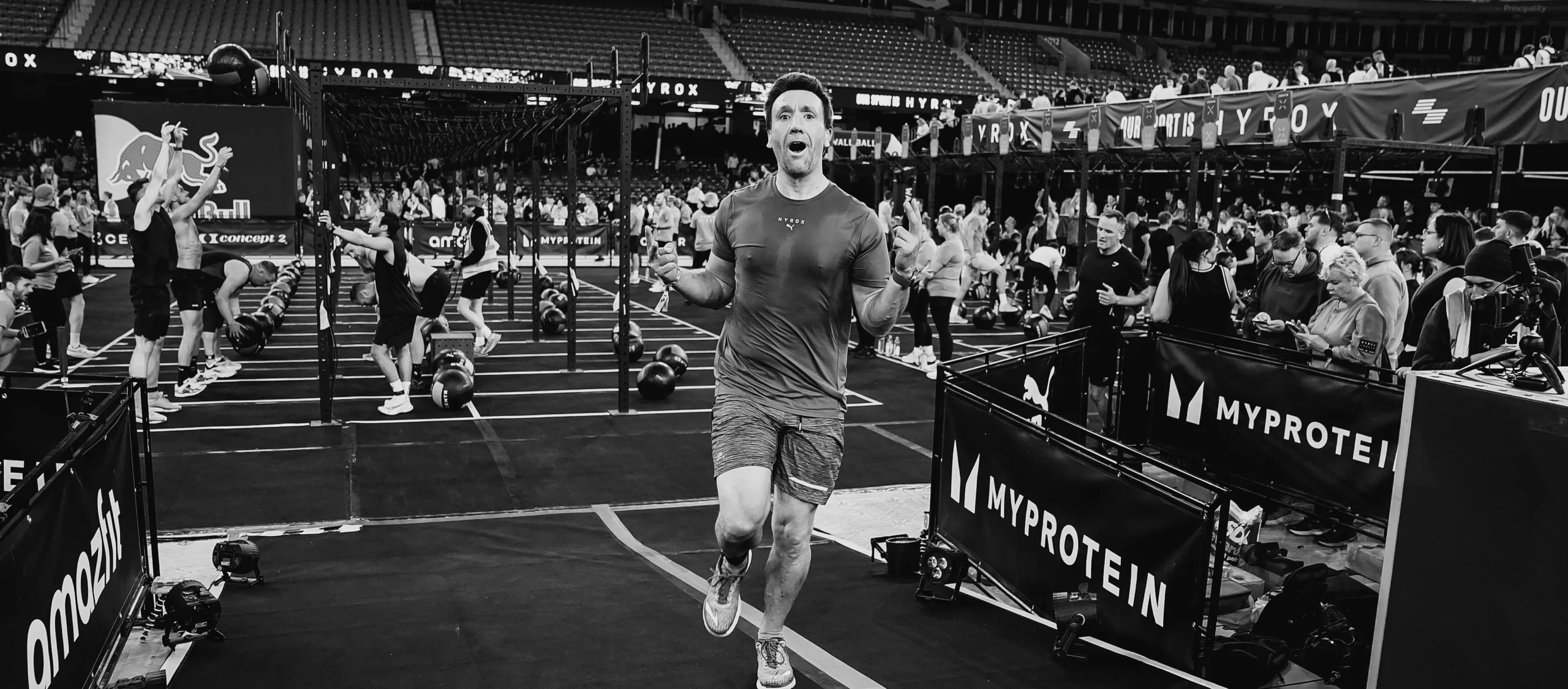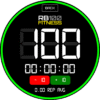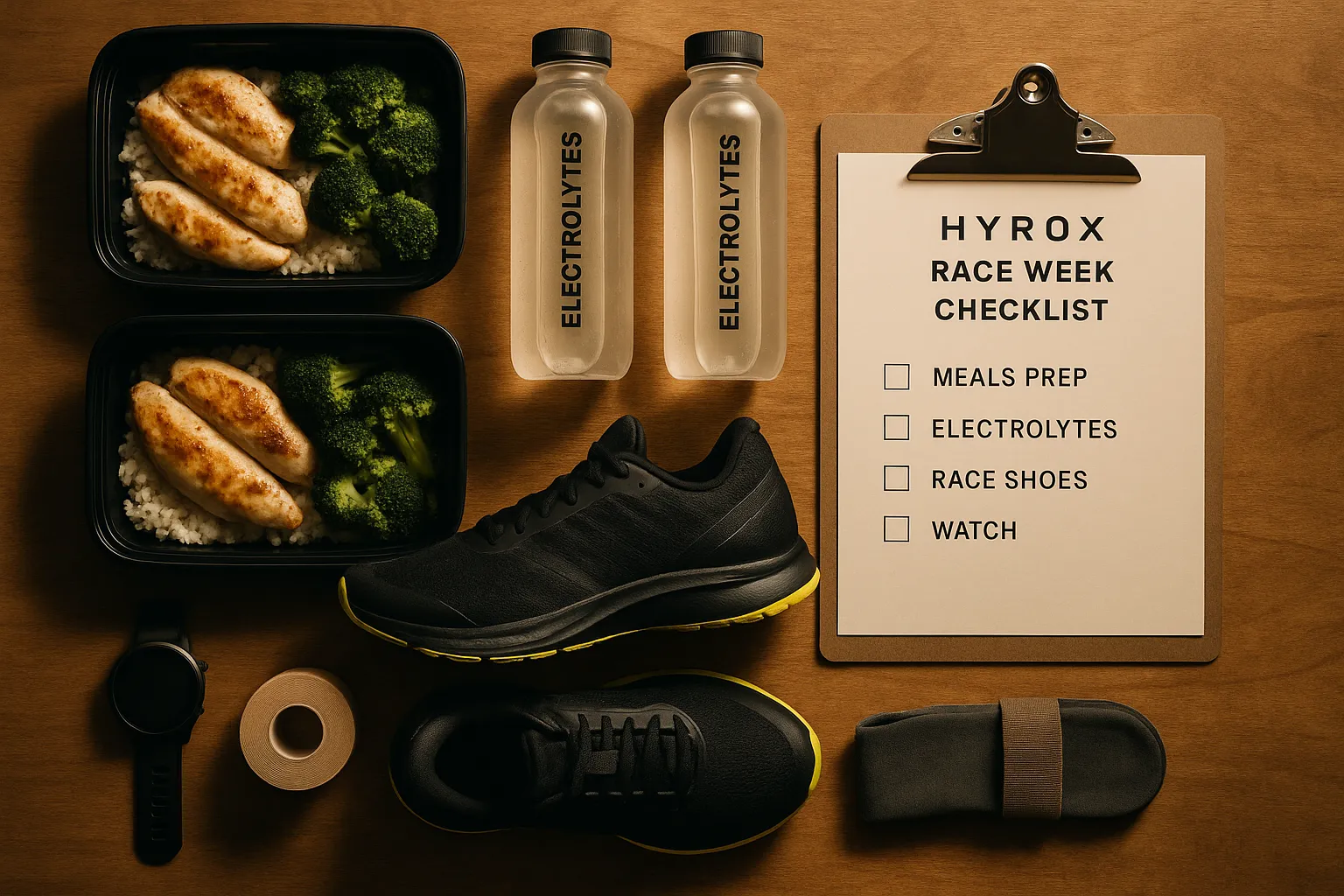Introduction: HYROX is a resilience sport
HYROX looks like a strength and conditioning race, yet it feels like a resilience test. By the time you reach the later stations, muscles are burning, breathing is heavy and your brain is offering every excuse to slow down. At that point, physical strength matters, but HYROX mental resilience is what keeps you moving.
Resilience is not about pretending the race is easy. It is the capacity to experience discomfort, doubt and fatigue, then continue to act with purpose. You can train that capacity in the same structured way that you train your engine or your sled push.
Linked reading from your HYROX Series hub:
- The HYROX Mindset: Training Your Mental Game for Hybrid Racing
- Periodisation for HYROX: Structuring Your Training Year
What mental resilience means in HYROX terms
In practical terms, HYROX mental resilience shows up in several ways. You:
- Hold your pacing plan even when others sprint past you early.
- Stay composed when the sled feels heavier than expected.
- Keep your focus on technique after a no rep call.
- Finish wall balls with organised sets instead of panic.
Rather than trying to avoid hard moments, resilient athletes expect them. Because of that, they treat each difficult patch as a situation they have prepared for, not a sign that they are failing. This mindset is built gradually through training exposures, not on race day.
Using structured discomfort to build HYROX mental resilience
Resilience grows when you experience controlled discomfort and respond skillfully. The key is to use training sessions that are challenging enough to test your mind, yet structured enough to remain safe and repeatable.
Examples include:
- Threshold intervals that feel tough but sustainable.
- Brick sessions that mimic late race fatigue.
- Station practice where you deliberately finish with short, gritty sets.
During these sessions, you are not only training fitness. You are training your reactions to discomfort. The moment your mind says “this is too much”, you practice breathing, using a cue and choosing one more rep.
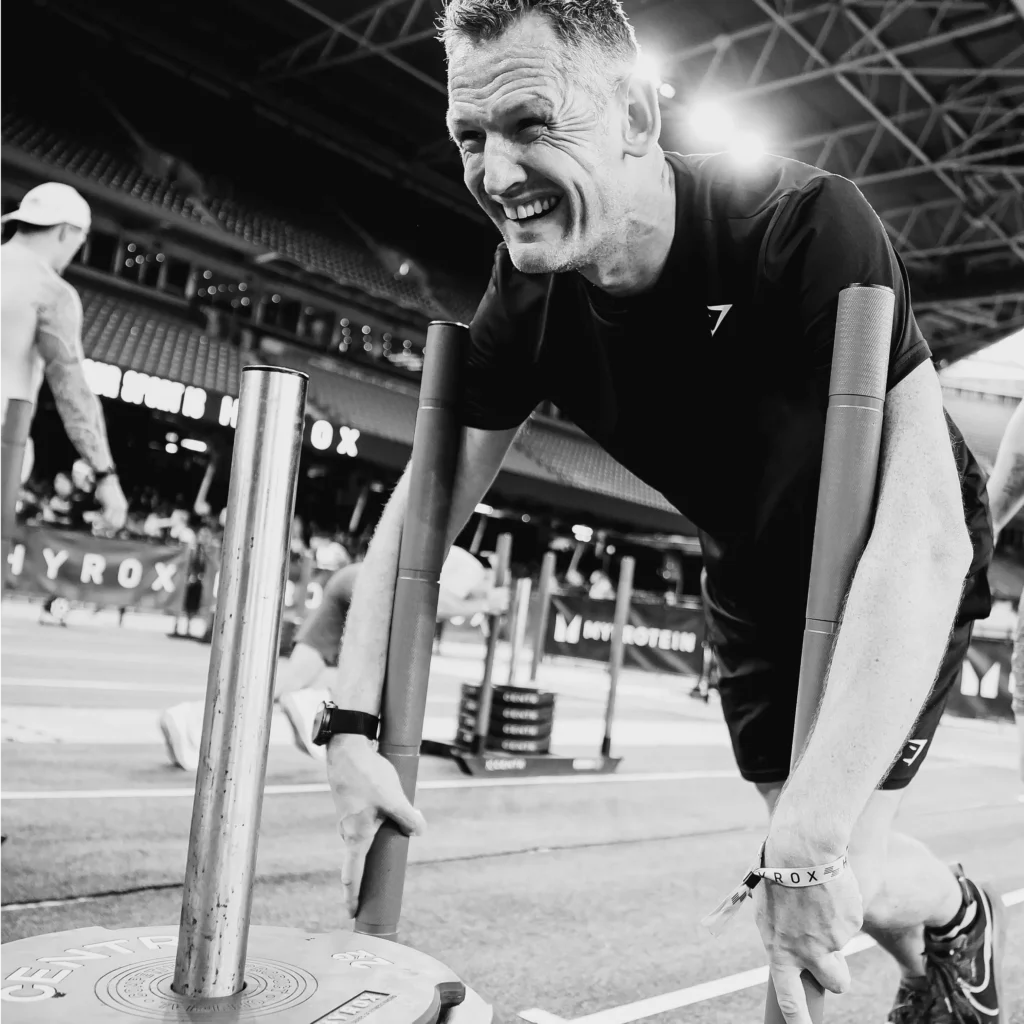
Building a weekly resilience block
You can deliberately program mental resilience into your HYROX training week. For Season 2025/2026, consider adding one “resilience focused” session each week.
For example:
Session concept: Controlled sufferfest
- Warm up thoroughly.
- 3 rounds of:
- 750 m run at steady hard pace
- Sled push at race load
- 20 walking lunges
- 500 m row
After each round, ask:
- Where did my focus slip
- What story did my brain start telling
- How did I bring myself back
Another option is to use a long brick session where the physical goal is clear, and the mental goal is to stay engaged with simple cues all the way through.
Linked reading:
- Brick Sessions for HYROX: Run-to-Station and Station-to-Run
- Weekly Engine Builder: The HYROX Cardio Template
Training language and self talk under pressure
Resilience is shaped by the words you use, especially when things get hard. In HYROX, there are three useful types of self talk:
- Instructional
- “Drive through feet.”
- “Relax shoulders.”
- “Breathe every rep.”
- Stabilising
- “I am safe. I am prepared.”
- “Stay in this rep.”
- Motivational, but grounded
- “One more clean set.”
- “Strong to the next cone.”
The goal is not hype. It is clarity. When fatigue hits, use a short phrase you have rehearsed. Because this language already lives in your training, it helps you stabilise and move forward without wasting energy on panic.
Linked reading:
- Race-Day Focus: How to Stay Present During HYROX
- Visualization and Flow State: The Psychology of Peak HYROX Performance
Recovery as part of resilience, not separate from it
Resilience is often misunderstood as simply “pushing through”. In reality, resilient athletes know when to push and when to recover. Without good recovery, stress accumulates until both body and mind break down.
Smart recovery practices include:
- Respecting lighter days in your periodised plan.
- Protecting sleep as your primary recovery tool.
- Using nutrition and hydration to support the nervous system.
These habits keep your baseline stable, which allows you to face hard sessions without feeling overloaded. A tired brain is less resilient and more reactive. A rested brain can notice stress and choose an effective response.
Linked reading:
- Recovery After HYROX: From DOMS to Full Performance
- Sleep, Recovery and Adaptation: The Hidden HYROX Advantage
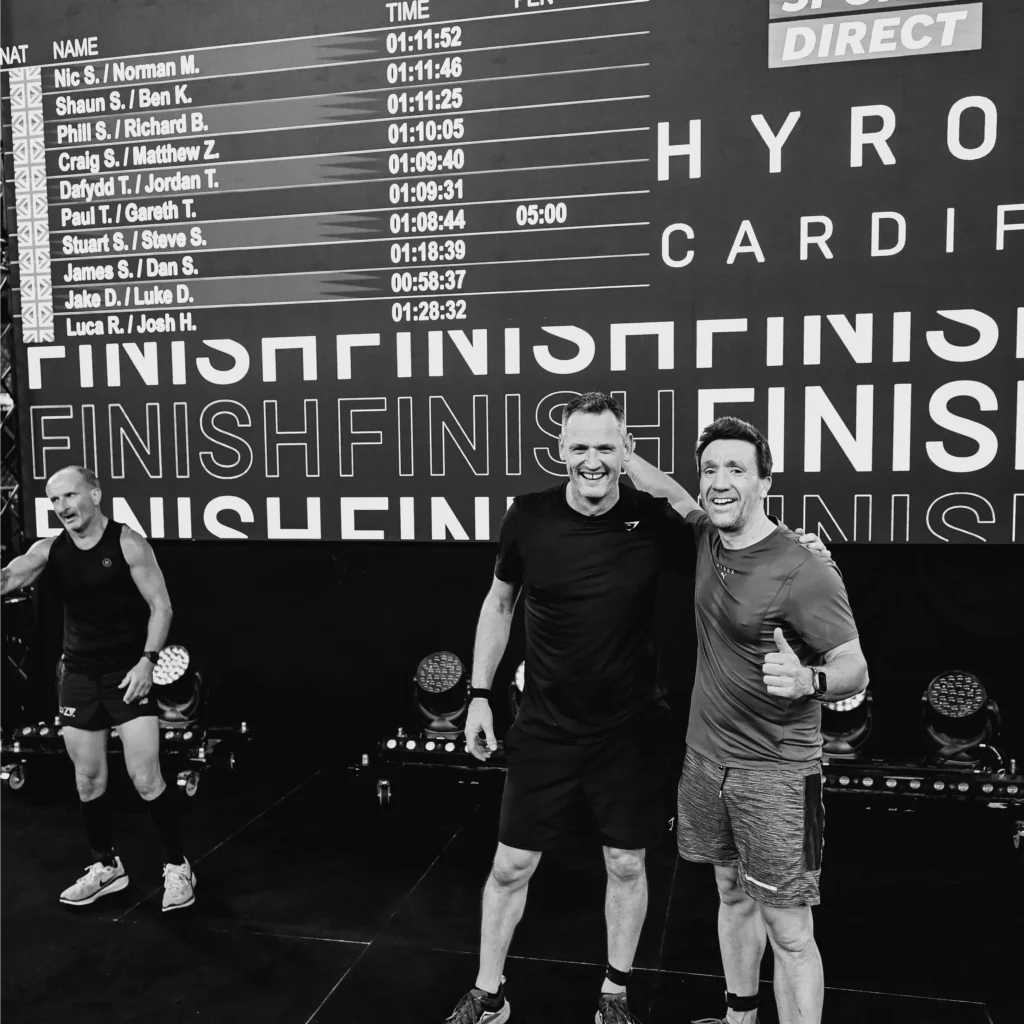
Reflecting after hard sessions and races
Mental resilience grows when you learn from each exposure. Therefore, it helps to review both training and race experiences in a structured way. After a tough session or HYROX race, ask yourself:
- What part of the session felt mentally hardest
- How did I respond
- Which strategy helped me most
- What will I try differently next time
Writing these answers keeps you from labelling a session as simply “good” or “bad”. Instead, everything becomes useful data. Over Season 2025/2026, this habit turns each HYROX into a resilience lesson rather than a pass or fail test.
Linked reading:
Summary: Train resilience with the same intent as strength
HYROX mental resilience is not mysterious. It is the cumulative effect of facing controlled discomfort, using clear self talk, recovering well and reflecting honestly over time. When you treat resilience as a trainable quality, you stop hoping you will cope on race day and start knowing you have practiced that response repeatedly.
Across Season 2025/2026, build one resilience focused session into your weeks, support it with smart recovery, and keep learning from each event. Your body will be stronger, but more importantly, your mindset will be harder to break.
“You do not become resilient in one race. You build it, rep by rep, session by session.” – RB100.Fitness
